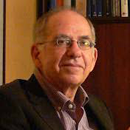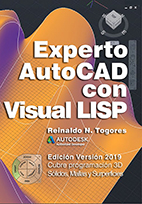| Avelino Víctor Couceiro Rodríguez. | Versión Española. |
Tenured Researcher in the Ministry of Culture and Academy of Sciences of Cuba and Associate Professor at the University of Havana. This article has been taken from the Letras-Uruguay website.
If we are going to talk about science fiction, we must usually board the time machine and travel to the past. But no such preparations are necessary: it was not more than fifteen years ago... when the first exhibition of science fiction in Cuban plastic arts opened its doors at the Plaza de la Revolución Municipal House of Culture venue at Calzada y 8, an idea conceived by the municipal Art Department, then chaired by Maritza Corrales, to celebrate the 5th Anniversary of the Oscar Hurtado Science Fiction Literary Workshop. [1]
This exhibition was repeated from the 19th to the 21st of December, 1986, at the Casa del Joven Creador in San Pedro No. 262, at the corner of Sol street in Old Havana,[2] sinaugural venue of the "Hermanos Saiz" Cuban Young Artists Association [3]. It was presented again, for the third and last time, on the first months of 1987, now again hosted by the Plaza de la Revolución Municipal House of Culture.
Since then, such happy actions have been forgotten. However, the beginning of the third millennium called for the topic to be retaken, the same which once was a sound contribution and that produced such excellent results from the scientific base from which it was conceived [4]. Of course, the conditions vary over time, but theoretical-conceptual and methodological guidelines were already established that are basic to the treatment of the subject in such complex manifestations of art. In fact, even then plastic arts were then understood in the broad criteria with which we now speak of visual arts, which then, and above all in Cuba, was very revolutionary.
But even more important was the concept with which we assumed science fiction as stated then in a paper: "not all the cosmos is science fiction, not only the cosmos is science fiction", which broke the easy dogmas about it. considering it instead as the fiction generated from or around scientific and technical development. The logical historical method was determinant although not exclusive [5], and from the international analysis of the phenomenon, it later centered in the Cuban case.
It also departed, therefore, from the conception of science fiction as exclusive to literature, and by extension to cinema and the mass media, extending it as a theme also for music, theater and of course, the plastic arts. And although it deals with other antecedents of interest in the previous centuries, it traces the beginnings of Cuban science fiction to the influence of the North American comic in Professor Timbeke (work of Horacio Rodríguez Quesada) during the fourth and fifth decade of the 20th century, and from Las Villas and towards Havana through the whole country in what was also the first Cuban cartoon.
On these foundations, those exhibitions managed to gather designs and illustrations for books and magazines, the press and Cuban comics (from Timbeke itself to the works by Luis Lorenzo Sosa, Virgilio Martinez, Domingo Garcia, Ubaldo Ceballos, Vladimir González, Régulo Cabrera, Manolo T. González, Carlos Rubio, Carlos Masvidal, Pedro Hernández Dopico and Roberto Artemio Iglesias, (these last two also with their paintings) and the oil paintings in a style announced by Manuel Couceiro and that would be fully addressed by Arturo Buergo, Mario Gallardo, Aldo Menéndez, Marcos Peña, Fernando García, Ileana Mulet, Ana Albertina Delgado and Elio Rodríguez Valdés.
| Ceramics by Reinaldo Togores figuring in the Exhibition. | |
The Colombian María Fernanda Lis (based in Cuba) dealt with science fiction in her paintings and her pottery, and Raúl Speek in paintings and collages. There we could appreciate the ceramic of Pastor Pérez, Reinaldo Togores (the latter, and not by chance, member of the same Oscar Hurtado Literary Workshop, like the sculptor Miguel Ortega) and hanging from the roof, the Matías Pérez balloons, by José Antonio Fuster; the engravings of Francisco Bernal, the inks of Roberto Cardona and those of María Elena Viyellas, the watercolors and illustration for music records by Constante "Rapi" Diego, the caricatures by Lázaro Miranda and those by Eduardo Hurtado, the sculptures by Carlos Delgado and the bronzes, wood carvings and installations by William Cabrera.
It was thus possible to group together a whole movement of very diverse artists who, in general, were unaware of each other but evidently coincided in the influences with which they were marked by the times, and that included a wide range of generations, technical trends and manifestations of the visual arts, including architectural and urbanistic proposals, murals, pyrography, environmental design, interiors and even costumes, hairdressing and everyday make-up.
This way it It was demonstrated that science fiction was a theme for any of these plastic ways of saying, one whose potential was not exhausted: the interest in the cosmos and the supposed life on other planets, or dealing other times in our universe, or about spaces and times coexisting with us beyond metaphysics and known dimensions; submerged or aerial cities with their allegorical landscapes and terrains; trips in time, but also within living organisms, in all matter and in psychology and the soul itself; species invented by creative fantasy (sometimes robotic), invisibility ...
Thus in fact, a well-deserved tribute was extended to those who throughout all of Humanity's history, at the expense of their dreams and efforts, have achieved that what once was science fiction (and often arising from it) is today the best of our daily reality.
Among supposed musical instruments (machines and tools) of beings from diverse natures, and even recreations arising from the atmospheric phenomena of parapsychology, there is still the call for the non-militarization of cosmos and respect for all otherness.
Would it be possible then at the beginning of a third millennium, that the same (and new) voices arising from these pages would rediscover, in the plastic statements of our artists, consciously or unconsciously, the new dreams that strive, from science and towards it, for a brighter future? On those fantasies they conquered fire and invented virtual reality, how they will banish war and ecocidal aggression, evil and indolence; overcome leprosy and tuberculosis, how cancer and AIDS will be defeated. Because fortunately, those beautiful talented fools have existed in all ages, and ours is no exception. With them and for them, we have to cry out: it is the legacy we owe the future!
Notas:
[1] First of its kind in the whole continent and possibly in the world, this workshop personally attended by Daína Chaviano, was born in the same Art Department and was always located in the same municipality (especially in the "Roberto Branly" Communal Culture House at the corner of 37th Street and Paseo Avenue with events housed in the Municipal Culture House at Calzada corner to 8th Street), from where a fertile activity was undertaken for the whole country and even beyond.
[2] Today housing the Casa del Ron museum.
[3] We must recall that the Association was established exactly in December 1986, so it can be said that this exhibition was without doubt, among its first interests and actions, although as we saw, it had been born five months earlier at the Plaza de la Revolución Municipal House of Culture. Not in vain key figures for both were the same, for example, the author of this article, who was the curator at the head of those Department of Art exhibitions as well as the specialist in charge of the Literary Workshop tribute since the very origin of the idea, assuming all the implicit investigative process, and who at the same time was among the founders of the "Hermanos Saiz" Association in the Literature section, presiding the association's Plaza de la Revolución municipal group. But it was the head of that generation of artists, Víctor Fowler Calzado, who welcomed this initiative from the start due to his interest in enhancing the Association's initial life, resulting in an event which found due repercussion in the Cuban press.
[4] This research was presented at the Symposium of the City of Havana in November 1986 where it was recommended for publication, and finally, "La Ciencia Ficción en las Artes Plásticas Cubanas" was approved by the Editorial Board of the Cine Cubano Magazine and published by the Biblioteca Científico Técnica of the Cuban Academy of Sciences in 1996.
[5] It was also combined with the analytical-synthetic method because the diachronic dimension was combined with the synchronic and the iconographic method to discover symbols in art; deduction and induction, inference and observation.





